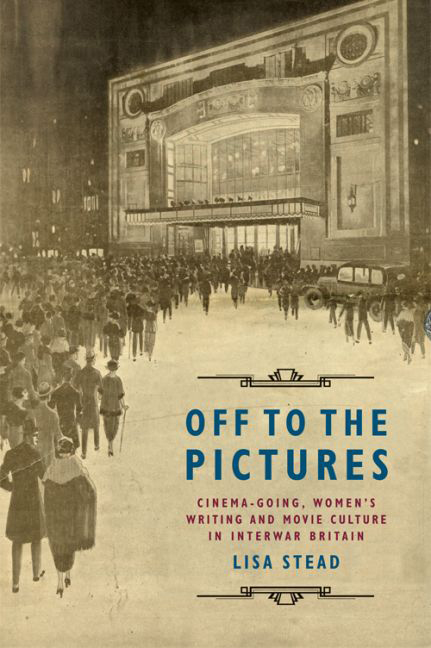Book contents
- Frontmatter
- Contents
- List of Figures
- Acknowledgements
- Dedication
- Introduction
- 1 Off to the Pictures: Cinema, Fiction and Interwar Culture
- 2 Screen Fantasies: Tie-ins and the Short Story
- 3 Middlebrow Modernity: Class, Cinema-going and Selfhood
- 4 Wander, Watch, Repeat: Jean Rhys and Cinema
- 5 Film Talk: C. A. Lejeune and the Female Film Critic
- 6 Elinor Glyn: Intermedial Romance and Authorial Stardom
- Afterword
- Bibliography
- Index
Introduction
Published online by Cambridge University Press: 15 September 2017
- Frontmatter
- Contents
- List of Figures
- Acknowledgements
- Dedication
- Introduction
- 1 Off to the Pictures: Cinema, Fiction and Interwar Culture
- 2 Screen Fantasies: Tie-ins and the Short Story
- 3 Middlebrow Modernity: Class, Cinema-going and Selfhood
- 4 Wander, Watch, Repeat: Jean Rhys and Cinema
- 5 Film Talk: C. A. Lejeune and the Female Film Critic
- 6 Elinor Glyn: Intermedial Romance and Authorial Stardom
- Afterword
- Bibliography
- Index
Summary
‘Where i'you going, Ma?’ gasped George.
‘The pictures!’
She might have been saying ‘The Devil.’
And to the pictures she went, catching the afternoon bus to Kiplington.
W. HoltbyThe movies, and going to the movies, were for many British women an integral part of their experience of modernity. ‘The pictures’ as both a representational media and everyday leisure activity was intertwined in the changing fabric of women's everyday lives between the world wars. The street, the shop, what you read, how you dressed – these things were increasingly coded for and by women through mass culture, and in no small part by cinema. Cinema intersected with changing relationships between work and play, the relationship between the sexes in public and private spaces, the movement of bodies within these spaces and ways of thinking about the self through dress, cosmetics, dance, advertising and shopping.
This was the period in which fleapits were overtaken by purpose-built picture-palaces and super-cinemas. Feature films came to dominate exhibition, and sound eclipsed the silent film. It was also a time in which British cinema-going was progressively geared towards women. If pre-war cinema had attracted a more working-class, mixed-gender audience base, it now extended its address to a feminised and more middle-class consumer. Cinema and the cinema programme became a much more established and embedded part of everyday British life for women. Film-going soon became, according to Iris Barry writing in the mid-1920s, ‘as standardized as a church service or a daily newspaper’ (1972 [1926]): 5). Alongside film, popular fiction was addressing a similar audience. Books were increasingly a commodity form as growing levels of literacy resulted in a larger reading public, and a rise in the price of printing costs helped push the primacy of the bestseller, reprints, cheap editions and paperback lists (St John 1990: 160). Woman-centred bestselling genres like the romance, the sex novel and the desert romance (perhaps most notably E. M. Hull's The Sheik (1919), adapted to film by Famous Players-Lasky in 1921), were consumed in great number by interwar readers.
This book explores the intersection of these developments, examining the nexus of women and modernity, women and cinema and women and British interwar print culture.
- Type
- Chapter
- Information
- Off to the PicturesCinemagoing, Women's Writing and Movie Culture in Interwar Britain, pp. 1 - 7Publisher: Edinburgh University PressPrint publication year: 2016



